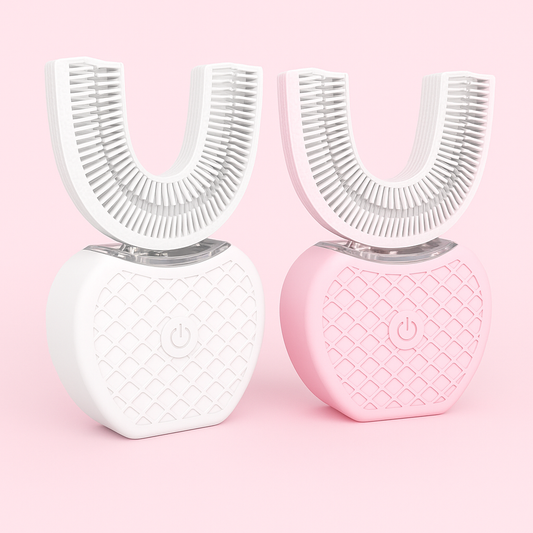Introduction: A Smarter Switch for a Healthier, Brighter Smile
Thinking about switching to a toothpaste without fluoride but still want visible whitening and healthy teeth? You’re not alone. Many people in 2025 are looking for alternative oral care routines that prioritize gentle whitening and overall oral health. A thoughtfully formulated toothpaste that combines xylitol and niacinamide can offer antibacterial support, gum soothing properties, and subtle whitening without relying on fluoride or harsh peroxide treatments.
This guide is your comprehensive starter kit: the why, the how, the what to buy, and the practical daily routine to help you move to a fluoride-free toothpaste with xylitol & niacinamide and achieve healthier, whiter-looking teeth.
What You’ll Learn in This Article
- How xylitol and niacinamide work and why they matter for oral health.
- The pros and cons of toothpaste without fluoride and how to mitigate risks.
- How to choose the best toothpaste for whiter teeth when going fluoride-free.
- A detailed starter kit and step-by-step transition plan.
- Advanced tips, FAQs, and troubleshooting for long-term success.
The Science Behind the Ingredients: Xylitol & Niacinamide
Understanding how active ingredients work helps you pick an effective product. Two ingredients increasingly used in fluoride toothpaste alternatives are xylitol and niacinamide.
- Xylitol: A naturally occurring sugar alcohol used as a sweetener. Xylitol does more than sweeten: it helps reduce harmful oral bacteria levels by disrupting how cariogenic bacteria metabolize sugar. It also stimulates saliva, which helps buffer acids and supports natural remineralization. Many people look for toothpaste with xylitol to maintain health teeth when avoiding fluoride.
- Niacinamide (Vitamin B3): Known for anti-inflammatory and barrier-supporting properties in skincare, niacinamide in oral care can help calm inflamed gums and support soft tissue health. Niacinamide toothpaste can be particularly helpful for those with mild gingival sensitivity or recurring irritation, supporting overall oral wellness.
How Gentle Whitening Works Without Peroxide
Not all whitening needs peroxide. Gentle whitening toothpaste that’s fluoride-free typically uses one or a combination of the following:
- Low-abrasivity polishing agents (e.g., fine silica) to remove surface stains safely.
- Enzymes that break down organic stains.
- Chemical brighteners that alter the appearance of stains without damaging enamel.
- Consistency and mechanical cleaning—better brushing technique and interdental cleaning make a significant cosmetic difference.
Look for products marketed as a good whitening toothpaste or toothpaste that whitens teeth that list RDA (relative dentin abrasivity) or state they are low-abrasivity to protect enamel and reduce sensitivity.
Why Some People Choose a Fluoride-Free Path
People choose toothpaste without fluoride for diverse reasons: personal preference for natural products, fluoride sensitivity, recommendations from healthcare providers, or a desire to pair alternative active ingredients like xylitol with supportive nutrients like niacinamide. Whatever the reason, it’s vital to switch responsibly, especially if you have moderate-to-high caries risk.
Risks & How to Compensate When You Go Fluoride-Free
Fluoride has decades of research supporting its role in cavity prevention. If you go fluoride-free, use a multi-pronged strategy:
- Choose toothpaste with clinically meaningful levels of xylitol and supportive ingredients like niacinamide.
- Brush twice daily for two minutes with a soft-bristle or electric toothbrush to maximize plaque removal.
- Floss or use interdental brushes daily to prevent interdental decay and staining.
- Use xylitol gum or mouthwash between meals to reduce bacterial load.
- See your dentist regularly and discuss topical fluoride varnish or professional treatments if you’re high risk.
How to Read Labels: Finding the Best Fluoride-Free Toothpaste
Label reading is a skill. For the best toothpaste for whiter teeth without fluoride, check for:
- Position of active ingredients: Ingredients appear in descending order by concentration. A notable amount of xylitol should appear early in the list.
- Niacinamide listed among active or supporting ingredients (usually as niacinamide or nicotinamide).
- Low RDA or an explicit statement about low abrasivity to reduce the risk of enamel wear.
- Absence of peroxide if you’re looking for non-bleaching whitening approaches.
- Third-party testing, clinical data, or transparent manufacturing and safety claims.
Starter Kit: What to Buy
Assemble this compact, practical starter kit to transition smoothly and safely:
- Fluoride-free toothpaste with xylitol & niacinamide: The core product. Use terms like toothpaste with xylitol and niacinamide toothpaste when searching.
- Soft-bristle or electric toothbrush: An electric brush with pressure sensor helps remove plaque effectively and protect enamel.
- Interdental brushes or floss: Essential for stain removal between teeth and gum health.
- Alcohol-free xylitol mouthwash or gum: Helpful between meals to suppress harmful bacteria and support saliva function.
- Low-abrasivity stain polish (optional): Use weekly or bi-weekly to lift surface stains without enamel damage.
- Travel/trial sizes: Always try a small tube first to ensure compatibility and taste tolerance.
Step-by-Step Transition Plan: 8-Week Roadmap
Give yourself eight weeks to fully evaluate results. Gentle whitening is a gradual process.
- Week 1: Begin using the fluoride-free toothpaste twice daily. Maintain existing brushing times and technique. Add daily flossing if you don’t already.
- Weeks 2–3: Add xylitol gum or mouthwash after meals. Monitor for sensitivity, taste changes, or any gum irritation.
- Weeks 4–6: Evaluate whitening progress and sensitivity. Use a low-abrasivity polish once a week if desired. Continue interdental cleaning and reduce high-frequency snacking.
- Weeks 7–8: Book a dental checkup if you switched from a fluoride regimen—your dentist can assess enamel health and offer professional cleaning for maximum cosmetic benefit.
Daily Routine for Best Results
- Brush twice daily for two minutes with your new toothpaste.
- Floss or use interdental brushes once daily.
- Use xylitol-containing gum or mouthwash between meals to suppress cariogenic bacteria.
- Rinse with water after consuming staining or acidic foods/drinks.
- Limit smoking, strong teas, coffee, and red wine when possible to maintain whitening results.
Comparison: Fluoride Toothpaste vs. Fluoride-Free Options
Making an informed decision requires weighing benefits and trade-offs.
- Fluoride toothpaste: Strong evidence for cavity prevention and enamel remineralization. Often paired with whitening agents for cosmetic benefits.
- Fluoride-free toothpaste with xylitol & niacinamide: Offers bacterial control via xylitol and gum-supporting benefits via niacinamide, often with gentle whitening and lower sensitivity. Best for people with low-to-moderate caries risk or those who prefer natural or alternative formulations.
Realistic Expectations: Whitening Timeline and Limits
Gentle whitening toothpaste works mainly on surface stains. Expect subtle, progressive improvements over several weeks to months. For deep intrinsic stains or significant discoloration, professional whitening or dentist-recommended treatment is usually necessary. If your priority is mild to moderate cosmetic brightening with improved gum health and fewer harsh chemicals, a properly chosen fluoride-free toothpaste can be a great fit.
Product Selection Tips: Finding the Toothpaste Whitening Best for You
How to identify a quality product when searching terms like toothpaste whitening best or best toothpaste whitening teeth:
- Read ingredient lists carefully—xylitol should be prominent, niacinamide present, and abrasive agents low.
- Look for user reviews that mention sensitivity, taste, and the appearance of stains after 4–8 weeks.
- Prefer products transparent about RDA values and manufacturing standards.
- Consider starter or travel sizes before buying multiple tubes.
Common Questions and Troubleshooting
- Will I get cavities if I stop using fluoride toothpaste? Not necessarily—but you must strengthen other preventive measures. If you have a history of frequent cavities, consult your dentist before stopping fluoride.
- What if I notice increased sensitivity? Stop use and consult your dentist. Choose toothpaste labeled for sensitivity and low abrasivity. Niacinamide can be soothing, but individual reactions vary.
- How to address stubborn stains? Combine your at-home routine with professional cleaning or dentist-guided whitening treatment.
- Is niacinamide toothpaste helpful for gum inflammation? Niacinamide has anti-inflammatory properties that may support gum health, but it’s not a replacement for professional periodontal care.
- What about "toothpaste zit" or skin breakouts? Some people worry about topical acne from oral products. If you experience skin reactions near the mouth, discontinue use and consult a dermatologist.
Advanced Tips for Long-Term Oral Health & Whitening
- Rotate products if desired: combine a xylitol/niacinamide toothpaste with periodic professional fluoride treatments if your dentist recommends it.
- Maintain consistent interdental cleaning—most stains begin and persist between teeth.
- Track your diet and hydration. Saliva is your natural defense—stay hydrated and chew xylitol gum when needed.
- Use whitening-boosting habits like rinsing after staining drinks and scheduling regular cleanings every 6–12 months.
Where to Buy Trusted Fluoride-Free Options
When searching online for a good whitening toothpaste or toothpaste that whitens teeth without fluoride, prefer reputable brands that disclose ingredient concentrations and testing. For a curated selection of fluoride toothpaste free options that emphasize xylitol, niacinamide, and gentle whitening, consider checking Havana Body’s product line. They offer several formulations marketed toward people seeking a gentle, effective routine for health teeth and cosmetic improvement.
Conclusion: Ready to Switch Your Smile?
Switching to a fluoride toothpaste free regimen with xylitol and niacinamide can be a safe, effective path to gentle whitening and stronger gum health — when done thoughtfully. Prioritize low-abrasivity formulas, consistent hygiene, interdental care, and regular dental visits. If you’re searching for reliable products, Havana Body offers curated options that match the needs described in this guide. Explore their selections for best toothpaste for whiter teeth and specific toothpaste with xylitol. Ready to build your starter kit and make the switch? Visit Havana Body to browse, compare, and purchase fluoride-free options tailored for gentle whitening and healthier teeth.
Further Reading & Resources
- Ask your dentist about topical fluoride alternatives and risk assessment before a full switch.
- Look for product literature and clinical summaries when evaluating a toothpaste's whitening and antibacterial claims.
- Tracking progress with photos at 2–4 week intervals helps you spot gradual improvements and tune your routine.


